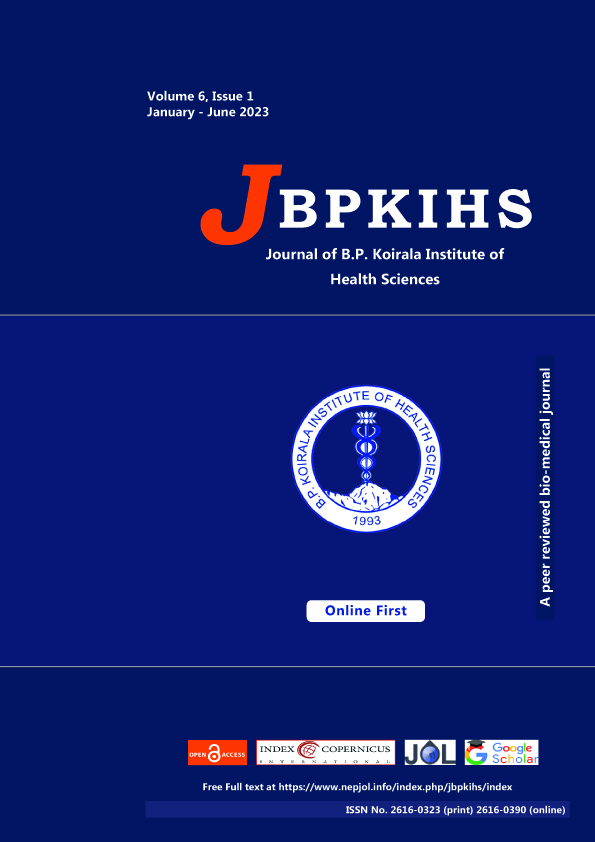A Study of Ventriculoperitoneal Shunt in Management of Pediatric Hydrocephalus
DOI:
https://doi.org/10.3126/jbpkihs.v6i1.52789Keywords:
Hydrocephalus, Infections, Ventriculoperitoneal shuntAbstract
Background: Hydrocephalus is one of the most common clinical conditions affecting the central nervous system and Ventriculoperitoneal (VP) shunt is the most common procedure used. We report an outcome analysis of various risk factors and etiological factors for shunt failure in pediatric patients from a single institution.
Methods: A single institutional cross-sectional observational study was conducted in 45 operated cases of hydrocephalus below 16 years of age from 2020 to 2022. Etiology, various risk factors, surgery time, cerebrospinal fluid (CSF) analysis and shunt complications were the parameters analysed. The association of parameters was analysed using the Chi-square test and binary logistic regression.
Results: Forty-five patients who fulfilled the inclusion criteria were enrolled in the study. About 57.8% of patients were male, and the mean age of patients at the time of VP shunt was six months. The majority of the patients belonged to 0-1 years of age with 68.9%. The commonest etiology of hydrocephalus was congenital aqueduct stenosis (42.22%). Overall shunt complication was found in 20% of patients. Chi-Square analysis revealed emergency surgery (p = 0.01) compared to elective surgery, long duration of surgery (≥ 1 hour; p = 0.01) compared to short duration of surgery (< 1 hour), and increased protein content in CSF analysis (p = 0.001) were the significantly associated with shunt failure. But only increased CSF analysis (p = 0.04) was found to be significant predictor of shunt complication when adjusted with other significant variables in binary logistic regression.
Conclusion: Emergency surgery, long duration of surgery, and increase protein content in CSF analysis were found to be associated with shunt complications and protein CSF was found to be significant predictor of shunt failure after adjusting with other variables.
Downloads
Downloads
Published
How to Cite
Issue
Section
License
Copyright (c) 2023 Journal of BP Koirala Institute of Health Sciences

This work is licensed under a Creative Commons Attribution-NonCommercial-NoDerivatives 4.0 International License.
This license enables reusers to copy and distribute the material in any medium or format in unadapted form only, for noncommercial purposes only, and only so long as attribution is given to the creator.




